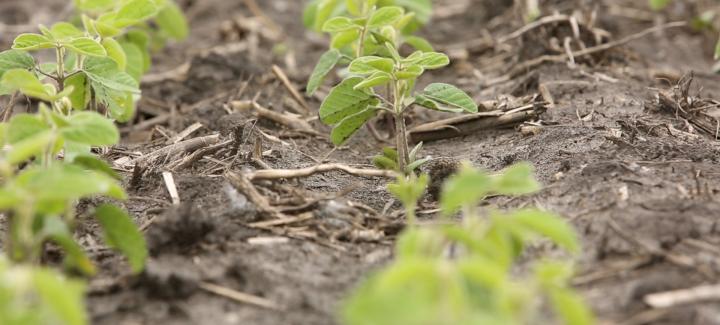
Dry conditions in the northern Corn Belt and heavy rains and storms in the Delta South have growers wondering what Mother Nature has in store for them next. Crop conditions continue to deteriorate across the country, especially in the Dakotas where extreme drought persists. In North Dakota, 20 percent of the state’s corn crop and 35 percent of soybeans are listed in poor to very poor condition. In South Dakota, 17 percent of corn and 14 percent of soybeans are listed in poor to very poor condition. As corn and soybeans near the important vegetative and pollination stages, growers are looking for some much-needed weather relief. Here’s what we’re hearing from a few of our regional sales agronomists.
Bethany Oland, Region 7 RSA, South Dakota and South-Central North Dakota
Region 7 has seen some unusual weather swings in the 2021 growing season. What started as an early planting season first led to colder-than-usual temperatures and then high heat coupled with wind. Most acres were able to be planted this year, with some seeing second and third replants. While select areas have received appreciated rains, most of the geography is experiencing the effects of drought stress. In areas affected by drought, corn leaves have curled tight and soybean growth is dormant. In areas that have received any amount of moisture, planting depth and down pressure have been a topic of discussion, as this year any variability in depth could determine the success of a plant.
Joe Gorenz, Region 11, Southern Wisconsin, Northern Illinois
A few updates from our ISRs…
Every year is a challenge, and the spring of 2021 certainly was no exception. We had a larger-than-normal planting window, and ground conditions were good very early. Some growers planted and some waited. Any growers who were early planting into no-till or a cover crop had crops that struggled in the germination stage. Even with all the early weather issues, Stine® corn and soybeans have fared very well. Like many areas, we went from a little dry to very wet to dry. Heavy isolated rains in early and mid-May caused some replanting. Some areas had four to seven inches within 48 hours. Early feedback from growers is very positive. With the recent warmup and rains, crop conditions have improved. And in my area of Region 11, crop conditions have gone from a range of fair to average to a range of average to very good, but there’s still a long way to go! — Paul Corzine
Here in east-central Illinois, corn and soybeans have been progressing nicely with corn ranging anywhere from V8 to V12 and soybeans from V4 to V6. Currently, we have not seen any major weed, disease or insect pressure. We have also recently received a half-inch of rain in most areas. — Tyler Fanning
Kevin Ryan, Region 14 RSA, Delta South
Areas in northern Mississippi, northern Alabama and southeastern Arkansas have been impacted by heavy rains and flooding. Unfortunately, many soybean fields will need to be replanted. On the bright side, corn that has not been impacted by flooding is looking very good. Most corn is tasseling or filling ears. Stine corn hybrids look impressive!
Katie Lorenz, Region 21 RSA, North Dakota
North Dakota has experienced the Wild West this past month. While we were fortunate to have dry planting weather this year, the drought wages on. And we even experienced frost damage and 100-degree temps within a week last month. Most fields are showing symptoms of wind damage and sandblasting from dry topsoil. These crops have been through a battle, and now we are observing damaged corn and soybean fields with uneven emergence and growth stages.
According to the North Dakota State University Crop & Pest Report, "corn is in the 4- to 7-leaf stages; ears have been initiated and number of seed rows (are) being determined. Corn damaged by the May 28 frost lost the lowest leaves and (have) ragged mid-leaves, but newest and future leaves are developing normally." It's recommended that if corn plants are missing leaves, growers can use growing degree day units to estimate the corn growth stage: 120–125 units for plant emergence then 80–85 units per leaf until the V10 stage.
For soybeans, they are better able to tolerate stress but will require moisture soon as they head into the reproduction stages.
Really, our region needs rain on a weekly basis for the next three months to have a satisfactory row crop. In the meantime, growers need to be on the lookout for weeds and insects as drought conditions continue. And keep an eye out for aphids — they have been spotted!
Stay tuned for more crop progress updates from our regional sales agronomists next week!
Related Articles
-

Start strong with Stine®: Maximizing your 2026 potential
January 2026 in Agronomy
-

Stine® to offer Syngenta’s Victrato® soybean seed treatment in 2026
December 2025 in Agronomy
-

Use Stine’s XP® seed treatments to prevent early injury to your crops
December 2025 in Agronomy
-

Understanding Stine’s enhanced oil profile soybeans
December 2025 in Agronomy



